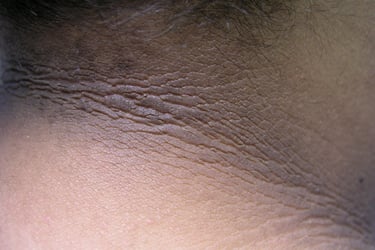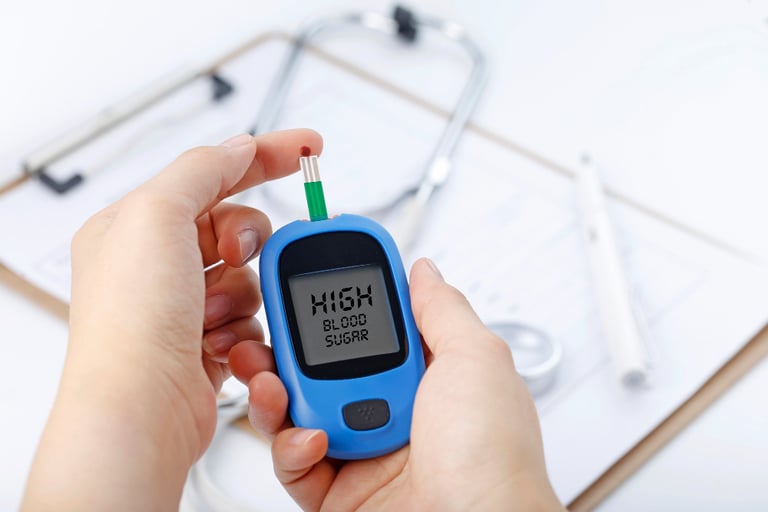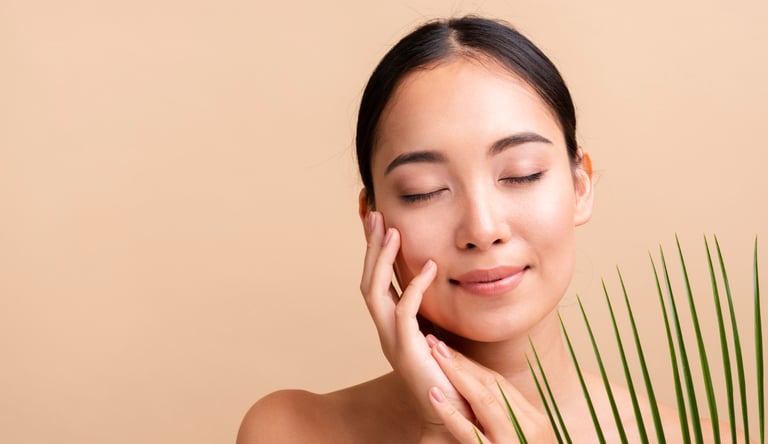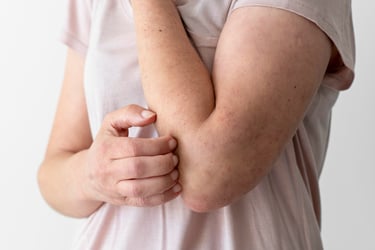Diabetes Skin Symptoms: What Your Skin Might Be Telling You About Blood Sugar
Learn how diabetes skin symptoms—like dark patches, dryness, and slow healing—can reveal high blood sugar. Spot the signs early for better control.
Dr Priya Gill
10/13/20254 min read
When Your Skin Reflects What’s Happening Inside
Your skin isn’t just a protective layer—it’s also a mirror of your internal health. Sometimes, what appears to be a simple rash, dryness, or pigmentation may actually point to deeper issues such as diabetes. Many people first notice diabetes skin symptoms before ever being diagnosed with high blood sugar. Understanding these signs can help you catch diabetes early and manage it effectively.
Dermatologists and endocrinologists often work hand in hand because the skin can reveal early metabolic changes. By paying attention to your skin, you can spot the warning signs your body is giving you.
1. Common Diabetes Skin Symptoms You Shouldn’t Ignore
Not all skin issues are caused by diabetes, but certain patterns are more common among people with high blood sugar. Here are key diabetes skin symptoms to look out for:
Acanthosis Nigricans
One of the earliest diabetes skin symptoms is dark, velvety patches that appear on the neck, armpits, or groin. This condition, called acanthosis nigricans, occurs when insulin levels are high, causing skin cells to reproduce more quickly and produce extra pigment. It’s often an early sign of insulin resistance—a warning flag for prediabetes.
Dry, Itchy Skin
High blood sugar can lead to dehydration, as the body tries to eliminate excess glucose through urine. This results in loss of skin moisture, leaving it dry, flaky, and itchy. Poor circulation further worsens this dryness, especially in the legs, arms, and feet.
Recurring Skin Infections
Another common diabetes skin symptom is frequent fungal or bacterial infections. Yeast thrives in warm, moist environments, and people with high blood sugar are more prone to such infections—especially in areas like underarms, groin, and between toes. Bacterial infections, such as boils or styes, may also occur more often due to reduced immune function.
Slow-Healing Wounds
Cuts, blisters, or insect bites that take a long time to heal are a major indicator of diabetes. Elevated glucose levels slow down collagen production and blood flow, delaying the healing process. This not only increases infection risk but also explains why diabetic foot ulcers can become severe if ignored.
2. Why High Blood Sugar Affects Your Skin
If you suspect you have diabetes skin symptoms, there are steps you can take to protect your skin health while getting proper medical care.
Check and Moisturise Daily
Inspect your skin regularly—especially your feet, underarms, and folds where moisture can build up. Keep your skin clean and hydrated with a fragrance-free moisturiser to prevent dryness and cracking.
Manage Blood Sugar Levels
The most effective way to improve your skin is to control your blood sugar. Stable glucose levels reduce inflammation and improve circulation, which helps your skin heal faster and stay supple.
Wear Breathable Fabrics
Choose cotton or moisture-wicking materials that allow airflow and reduce sweat buildup, especially in warm climates. This helps prevent fungal infections and irritation.
Avoid Self-Treating Persistent Skin Issues
Over-the-counter creams may offer temporary relief, but if symptoms keep coming back or worsen, consult a dermatologist. Persistent rashes, dark patches, or slow-healing wounds should always be professionally assessed.
4. When to See a Doctor
If you notice diabetes skin symptoms like darkened skin around your neck or persistent itchiness, it’s important to seek medical advice. These changes might appear before other diabetes symptoms like excessive thirst or fatigue. A simple blood test can confirm whether your blood sugar is high or if you’re at risk of prediabetes.
Dermatologists can help relieve discomfort and protect the skin barrier, while endocrinologists focus on identifying and managing the underlying hormonal imbalance. A collaborative approach ensures both your skin and internal health are treated effectively.




Need Help Personalising Your Skin & Hair Care?
Don’t let misinformation guide your skin and hair care. Consult the experts at Ranjit Skin & Hair Specialist Clinic and get a personalised treatment plan that works.
Book your consultation today. Your skin deserves the truth—and expert care.
Whatsapp at +60 12-279 4980 to make an appointment!




Conclusion: Listen to What Your Skin Is Saying
Your skin is one of the first places diabetes shows itself—often before you notice any other health changes. Early detection through these diabetes skin symptoms can make all the difference in preventing complications.
If you notice persistent dryness, dark patches, or recurrent infections, don’t ignore them. Schedule a consultation with a dermatologist or endocrinologist for a proper evaluation. With timely care, blood sugar control, and the right treatment, both your skin and your overall health can be restored.






Expert dermatology and hair care solutions await.
Address
C4, Jalan SS15/4D, Subang Jaya, 47500 Petaling Jaya, Selangor
© 2025. All rights reserved.


Contacts
Clinic: +60356316090
Whatsapp: +60122794980
Email: klinikranjit16@gmail.com
